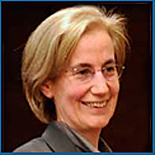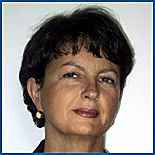EuroBioBank A Vital Resource In Treating Rare Diseases Like Friedreich’s Ataxia

Originally established in 2001 by two patient organisations: Association Française contre les Myopathies (AFM) and the European Organisation for Rare Diseases (EURORDIS), EuroBioBank is a unique network of biobanks that stores and distributes quality DNA, cell and tissue samples for scientists conducting research on rare diseases (RDs), including neuromuscular disorders like Friedreich’s ataxia, and to facilitate access to RD biospecimens and associated data. The Organisation for Economic Co-Operation and Development (OECD) defines a biobank as A collection of biological material and the associated data and information stored in an organized system, for a population or a large subset of a population. You can find the EuroBioBank database entry on Friedreich’s ataxia here.
The idea of a network of European biobanks emerged out of a particular context and a combination of events :
– Letters from families and patients affected by a rare disease offering to participate in research on their disease by giving a blood sample or other biological material.
– Scientific publications on rare diseases that underline the difficulties in finding biological material from “informative” families, a process that can take up to 10 years and consequently delays research.
– The necessity to avoid wasting or losing samples, particularly when research activities ceased.
– Intensification of genomic research, raising patients’ hope of better diagnoses and new therapies.
– Creation of two biobanks – Généthon and Myobank-AFM (formerly Banque de Tissus pour la Recherche)- by the Association Française contre les Myopathies (AFM), as well as the emergence of French and European networks of biobanks.
EuroBioBank network is the first operating network of biobanks in Europe providing human DNA, cell and tissue samples as a service to the scientific community conducting research on rare diseases, acting as a clearing house or “virtual” bank, with all samples listed in the central online catalogue remaining in possession of the member biobanks, where they are located and can be requested. It is the only network dedicated to rare disease research in Europe.
About 130,000 samples are available across the network and can be requested via the online catalogue. Approximately 13,000 samples are collected each year and 7,000 samples distributed in Europe and beyond. The biological samples are obtained from patients affected by rare diseases, including rare neuromuscular disorders.
The EuroBioBank Network is currently composed of 25 members, and 21 biobanks from nine European countries (France, Germany, Hungary, Italy, Malta, Slovenia, Spain, United-Kingdom and Turkey) as well as Isra el and Canada, and is coordinated by Fondazione Telethon (Italy) for its administrative activities, under the responsibility of Mary Wang and Lucia Monaco, Chief Scientific Officer and formerly Head of the Telethon Science Watch office, who directed the creation of the Telethon Network of Genetic Biobanks (TNGB).
el and Canada, and is coordinated by Fondazione Telethon (Italy) for its administrative activities, under the responsibility of Mary Wang and Lucia Monaco, Chief Scientific Officer and formerly Head of the Telethon Science Watch office, who directed the creation of the Telethon Network of Genetic Biobanks (TNGB).
 Dr. Marina Mora, a research biologist and head of the Muscle Cell Biology laboratory, Division of Neuromuscular Diseases and Neuroimmunology, at the Neurological Institute C. Besta in Milan, has been coordinating the the network’s scientific activities of since November 2012, when she took over from Hanns Lochmüller (2005 -2012).
Dr. Marina Mora, a research biologist and head of the Muscle Cell Biology laboratory, Division of Neuromuscular Diseases and Neuroimmunology, at the Neurological Institute C. Besta in Milan, has been coordinating the the network’s scientific activities of since November 2012, when she took over from Hanns Lochmüller (2005 -2012).
Originally funded by the EC between 2003-2006, the EuroBioBank received further EC support between 2007-2011 within the European Network of Excellence TREAT-NMD , which covered the cost sustained by Eurordis for the network coordination and website hosting. Each biobank of the network is financed by its own Institution or charitable organization. TREAT-NMD is a network for the neuromuscular field that provides an infrastructure to ensure that the most promising new therapies reach patients as quickly as possible. Since its launch in January 2007 the network’s focus has been on the development of tools that industry, clinicians and scientists need to bring novel therapeutic approaches through preclinical development and into the clinic, and on establishing best-practice care for neuromuscular patients worldwide.
As of January 2012, the Fondazione Telethon provides the administrative support for coordinating the EuroBioBank network and hosting the website. Sixteen member nation BBMRI-ERIC(Biobanks And Biomolecular Resources), one of the largest health Research Infrastructures in Europe today, is also an active collaborator of EuroBioBank.
The network was established by patients and researchers to facilitate research on rare diseases by guaranteeing quick and easy access to samples via an online catalogue. EuroBioBank’s founders, recognizing that rare diseases can be devastating and that patients urgently need treatments and better care, believed that by creating a critical mass of collections and facilitating the exchange of biological material, the EuroBioBank network could help accelerate research on these diseases.
Opportunities arose with the European 5th Framework Programme for Research and Development entitled “Quality of Life and Management of Living Resources” 1998-2002. A project proposal submitted under action line 14.1 “Support for Research Infrastructures” was accepted for negotiations and the contract signed on 11th December 2002.
EuroBioBank’s goals are to identify and localize biological material of interest to researchers, build a critical mass of rare disease sample collections, distribute high quality material and associated data to users, promote best-practice guidelines for biobanking activities, disseminate knowledge and know-how to the scientific community through training courses, and to enhance collaboration with the medical and scientific community in the field of rare diseases.
Samples are provided for selected research projects, the outcomes of which generally result in scientific publications listed on the EuroBioBank website.
The EuroBioBank catalogue lists samples available throughout the EuroBioBank network by type of biomaterial. A search engine enables a search by disease or by bank contact. Once a sample has been located in the catalogue, it can be requested by email. Therefore, the biological material is exchanged faster. If a sample does not appear in the EuroBioBank catalogue, help can be provided to further search it at: [email protected]
The EuroBioBank Network Charter has been the constituting instrument of EBB since January 2006, setting out principles agreed upon by the network partners. The Charter recalls the ethical guidelines endorsed by the EBB Network, defines the organisation and governance of the EBB, establishes the benefits and duties attached to partnership, as well as the conditions of access to and withdrawal of partnership.
An Open Source paper published in the European Journal of Human Genetics entitled “The EuroBioBank Network: 10 years of hands-on experience of collaborative, transnational biobanking for rare diseases” (2015 23, 11161123; doi:10.1038/ejhg.2014.272) is coauthored by Dr. Marina Mora, Corrado Angelini, Fabrizia Bignami, Anne-Mary Bodin, Marco Crimi, Jeanne- Hlne Di Donato, Alex Felice, Ccile Jaeger, Veronika Karcagi, Yann LeCam, Stephen Lynn, Marija Meznaric, Maurizio Moggio, Lucia Monaco, Luisa Politano, Manuel Posada de la Paz, Safaa Saker, Peter Schneiderat, Monica Ensin, Barbara Garavaglia, David Gurwitz, Diana Johnson, Francesco Muntoni, Jack Puymirat, Mojgan Reza, Thomas Voit, Chiara Baldo, Franca Dagna Bricarelli, Stefano Goldwurm, Giuseppe Merla, Elena Pegoraro, Alessara Renieri, Kurt Zatloukal, Mirella Filocamo and Hanns Lochmller, representing 29 insitutions and organizations in Europe, the U.K., and Canada.
The coauthros note that in the field of rare diseases the number of available biospecimens is, in general, very limited, and as a direct consequence of disease rarity, clinical trials are difficult to perform and so a limited number of treatments have been developed, disease prognosis and natural history are poorly known, and patients with RDs do not receive the care and medical attention available to people with common diseases. Sharing material and data on RDs is essential for identifying disease-causing genes, studying pathological mechanisms, and developing treatments.
The Journal of Human Genetics report describes in considerable detail the development of the EBB network over the past decade, its achievements, and the major challenges it has already faced and expects to face in the future.
Entry of new, European and non-European biobanks into the EBB network is encouraged, and to this end, an evaluation procedure and specific assessment criteria have been established. These criteria ensure adherence to minimum entry conditions that include the following: presence of collections of RD biological samples and their availability to the scientific community, a quality-control (QC) system in place for the management of the biobank, with standard operating procedures (SOPs) regulating sample and data acquisition, and sample processing, storage, and distribution.
Biobanks and biomaterial collections across the world can join EBB. The member biobank maintains the legal custodianship of samples, whereas the EBB acts as a clearing house or virtual biobank with its online catalogue and search engine for locating samples. Researchers from anywhere in the world who locate a sample of interest through the catalogue can directly contact the biobank holding the sample. Sample distribution is governed by the conditions set out in the EBB charter and standardised material transfer agreements (MTAs).
The paper coauthors conclude that over the past decade, the scale of biobanking activities, in terms of the quantity of samples and data archived, the range of diseases covered, and the institutions involved, have expanded markedly, with biobanks embedded in complex networks of research collaborations that span regions and countries. However, they observe that most European citizens have never heard of biobanks and are unaware of their importance in research on RDs. Furthermore, the legal and regulatory frameworks that apply to this area are fragmented.
They note that the EBB has long been the only network seeking to confront ethical, legal, and social issues related to RD biobanking across European countries, and that in the absence of a unified regulatory framework, but by seeking professional guidance and applying professional values and culture, the EBB has been able to progress and contribute to the development of regulations as well as to establishing a basis for international cooperation in RD biobanking. However, they caution that EBB and biobanks in general need to overcome numerous challenges in order to achieve their full potential as essential aids to RD research, with areas that still need work including lack of harmonization; lack of biomaterial and data sharing; lack of recognition; and lack of sustainability, and that the EBB, with its long experience in international biobanking, will continue to be a key global resource for life sciences research, drug development, and healthcare.
Sources:
EuroBioBank
The European Network of Excellence (TREAT-NMD)
Biobanks And Biomolecular Resources (BBMRI-ERIC)
The Journal of Human Genetics
Image Credits:
EuroBioBank






